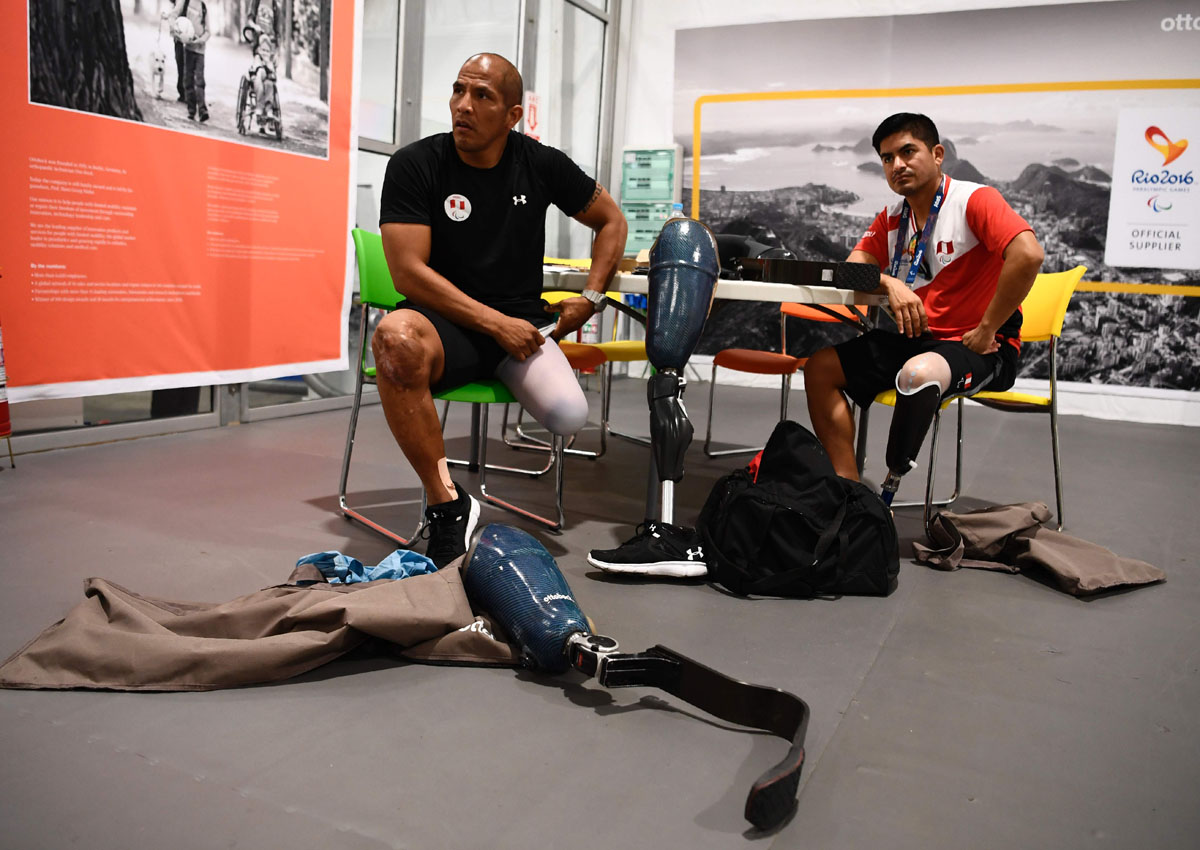RIO DE JANEIRO – When Paralympians break a prosthetic leg or damage a wheelchair in Rio, they know just where to go.
“It really looks a bit like a hospital for prosthetics,” said Peruvian Paralympian Jose Luis Casas in the waiting area of a workshop set up in a large hangar in Athletes’ Village.
The workshop is run by Ottobock, a German firm that has been the official repairer at the Paralympics since the 2004 Games.
A dozen wheelchairs were lined up during a visit this week, waiting to be given care. Casas, a former soldier whose left leg has been amputated, had come to get his carbon running blade looked after.
Workers in the company colors of green shirts and grey trousers attended to their patients. The sound of drills whirring filled the air.
Casas, a 200m runner, was impressed. “I didn’t know this place before. It’s superb,” he told AFP.
Ottobock, the world’s biggest prosthetics company, shipped over a formidable amount of material for the Games: 300 plastic feet, 70 carbon blades, thousands of screws and other hardware – 18 tons in all, with 77 technicians from about 30 countries to do the work.
The service is free of charge and the technicians will operate on any brand of gear, either repairing or sometimes replacing the piece.
More than 80 per cent of repairs involve wheelchairs and about 15 per cent prosthetics.
“We get a lot of wheelchairs after the rugby and basket, games which are the most violent. But we also get wheelchairs for everyday purposes, which are the most used,” said company spokeswoman Merle Florstedt.
Italian para-fencer and amputee Alberto Andrea Pellegrini came looking for protection to avoid cuts on his damaged leg during competitions.
“There’s always something I need and every Paralympics I come here,” said Pellegrini, who has competed in four Games and has nine medals.
There’s a waiting time of about 30 to 45 minutes, US technician Derek Johnson said.
First the athletes are checked out and then given an estimate on how long it will take. The repair shop does its best to be quick.
“They rely on us,” Johnson said.
There are games and tables in the waiting area to help pass the time. Other athletes whip out their mobile phones to record the day their prosthetic leg or wheelchair went in for an operation.
Just a few days into the Rio Paralympics, Ottobrock says it has already done 1,200 repairs. Around 200 a day is typical.
Johnson said that building things is his passion. “What’s best of all is making things that help people,” he added.
It’s not all about surgery for Paralympic gear. The Games are also an opportunity for makers of prosthetics and other equipment to fight for market share and publicity.
“Of course there is competition” during the Games, said Ottobock spokesman Rudiger Herzog.
The market leader’s main rival, Icelandic company Ossur, was famous for building Oscar Pistorius’s running blades in London 2012 and has sponsored about 20 international athletes in Team Ossur.
Among them is Frenchwoman Marie-Amelie Le Fur, who won gold in the longjump on Friday and is also taking part in the 100m, 200m and 400m races.
The global prosthetics industry is a niche affair worth slightly more than a billion dollars, Ossur said, and within that the sporting prosthetics are tiny. Ottobock produces some 150,000 prosthetics a year, but only 800 purely for sport.
However, the Paralympic spirit is catching on as the Games go more mainstream and the technology makes the sports more exciting to watch and play. And gradually, the barriers between high performance and regular equipment are blurring.
“Our research and development team is learning a lot about the biomechanics of athletes which can perhaps be transferred back to products for other amputees,” said Edda Geirsdottir, a spokeswoman for Ossur.















































































